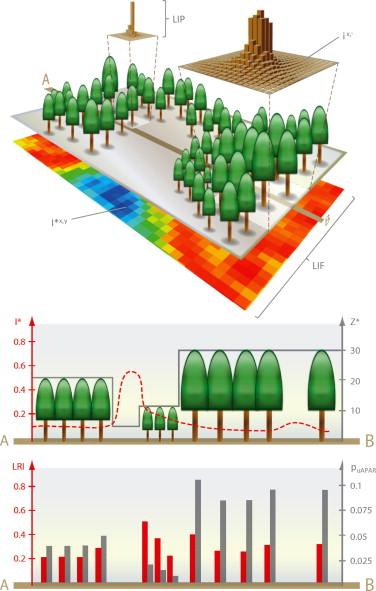A groundbreaking study published in Nature unveils a novel modeling approach to unravel the complex ecological dynamics and functional structures of paleocommunities. By integrating advanced computational techniques with fossil data, researchers are now able to reconstruct ancient ecosystems with unprecedented detail, offering fresh insights into how prehistoric species interacted and evolved over millions of years. This innovative method not only sheds light on the intricate web of past life but also provides a vital tool for understanding biodiversity patterns in the context of environmental change.
Modeling Paleocommunity Dynamics Unlocks New Ecological Insights
Recent advancements in ecological modeling have paved the way for a nuanced understanding of ancient ecosystems. By integrating fossil records with dynamic simulation techniques, researchers have devised innovative frameworks that capture the intricate interplay between species over geological timescales. These models reveal how functional traits and species interactions governed community stability, resilience, and adaptation in paleocommunities, offering a fresh lens to interpret extinction events and recovery phases. The empirical data combined with computational power allows for the identification of key drivers behind ecological shifts and highlights the role of niche differentiation and competitive hierarchies.
Key findings from these modeling efforts include:
- Functional diversity emerged as a critical factor in maintaining community robustness through environmental changes.
- Species interaction networks demonstrated non-linear dynamics influencing recovery rates post-disturbance.
- Traits linked to resource utilization and reproductive strategies predicted survival probabilities during mass extinction events.
The table below summarizes the distinct functional groups identified in a Late Permian paleocommunity and their modeled ecological roles:
| Functional Group | Ecological Role | Dominant Trait |
|---|---|---|
| Herbivorous Amniotes | Primary Consumers | High Trophic Efficiency |
| Carnivorous Therapsids | Top Predators | Ambush Hunting |
| Detritivores | Decomposers | Rapid Nutrient Cycling |
| Aquatic Invertebrates | Primary Consumers | Filter Feeding |
Revealing Functional Structures Through Advanced Quantitative Techniques
Utilizing cutting-edge quantitative methods, researchers have made significant strides in decoding the intricate patterns of ancient ecosystems. By employing sophisticated modeling frameworks, they can now reconstruct the functional roles and interactions that defined paleocommunities millions of years ago. This approach integrates multiple data streams, from fossil records to geochemical proxies, enabling a dynamic representation of ecological networks rather than a static snapshot. These insights shed light on how species adapted, competed, and coexisted within their environments, providing a clearer understanding of ecosystem resilience and vulnerability over geological timescales.
Among the breakthroughs are novel algorithms capable of estimating key ecological parameters such as trophic levels, niche overlap, and energy fluxes within extinct communities. The table below illustrates a simplified comparison of functional traits recovered through this modeling approach across three major paleocommunities:
| Paleocommunity | Dominant Functional Groups | Estimated Energy Flow (%) | Resilience Indicator |
|---|---|---|---|
| Late Devonian Reef | Filter feeders, Grazers | 45 | High |
| Permian Terrestrial | Herbivores, Apex predators | 50 | Moderate |
| Jurassic Marine | Cephalopods, Benthic carnivores | 40 | High |
- Hierarchical modeling to understand multi-scale ecosystem dynamics
- Machine learning integration for pattern recognition in fossil datasets
- Simulation of functional trait evolution under various environmental stressors
This multifaceted strategy is transforming paleobiology by not only reconstructing who lived where and when, but also revealing the underlying ecological mechanisms driving evolutionary trajectories. Such revelations pave the way for better predictions of contemporary biodiversity responses to global change, rooted in deep time evidence.
Experts Recommend Integrating Modeling Approaches for Future Paleoecological Research
Leading researchers in paleoecology emphasize the need for a holistic integration of multiple modeling strategies to unravel the complex dynamics of ancient ecosystems. By combining statistical modeling, network analysis, and functional trait-based approaches, scientists can achieve a more nuanced understanding of how paleocommunities evolved, interacted, and responded to environmental pressures over geological time. This multifaceted perspective enables the reconstruction of not only species distributions but also the intricate functional roles each organism played within the ecosystem.
Experts advocate focusing on several key aspects to enhance future research efforts, including:
- Cross-disciplinary collaboration between ecologists, data scientists, and paleontologists to refine model accuracy.
- Utilization of high-resolution fossil datasets to improve temporal and spatial precision.
- Development of adaptive modeling frameworks that can accommodate new data and evolving theories.
| Modeling Approach | Primary Benefit | Example Application |
|---|---|---|
| Network Analysis | Reveals species interactions | Mapping predator-prey webs |
| Trait-Based Models | Links function with biodiversity | Functional resilience under climate shifts |
| Bayesian Statistics | Incorporates uncertainty | Estimating species range changes |
Insights and Conclusions
As researchers continue to unravel the complexities of ancient ecosystems, this innovative modeling approach offers a powerful new lens to quantify the ecological dynamics and functional structures of paleocommunities. By bridging gaps in our understanding of how prehistoric species interacted and adapted, the study not only sheds light on the past but also provides crucial insights that may inform conservation strategies in today’s rapidly changing environments. With this breakthrough, the door is now open for deeper explorations into Earth’s ecological history, revealing patterns that have shaped life across millions of years.
